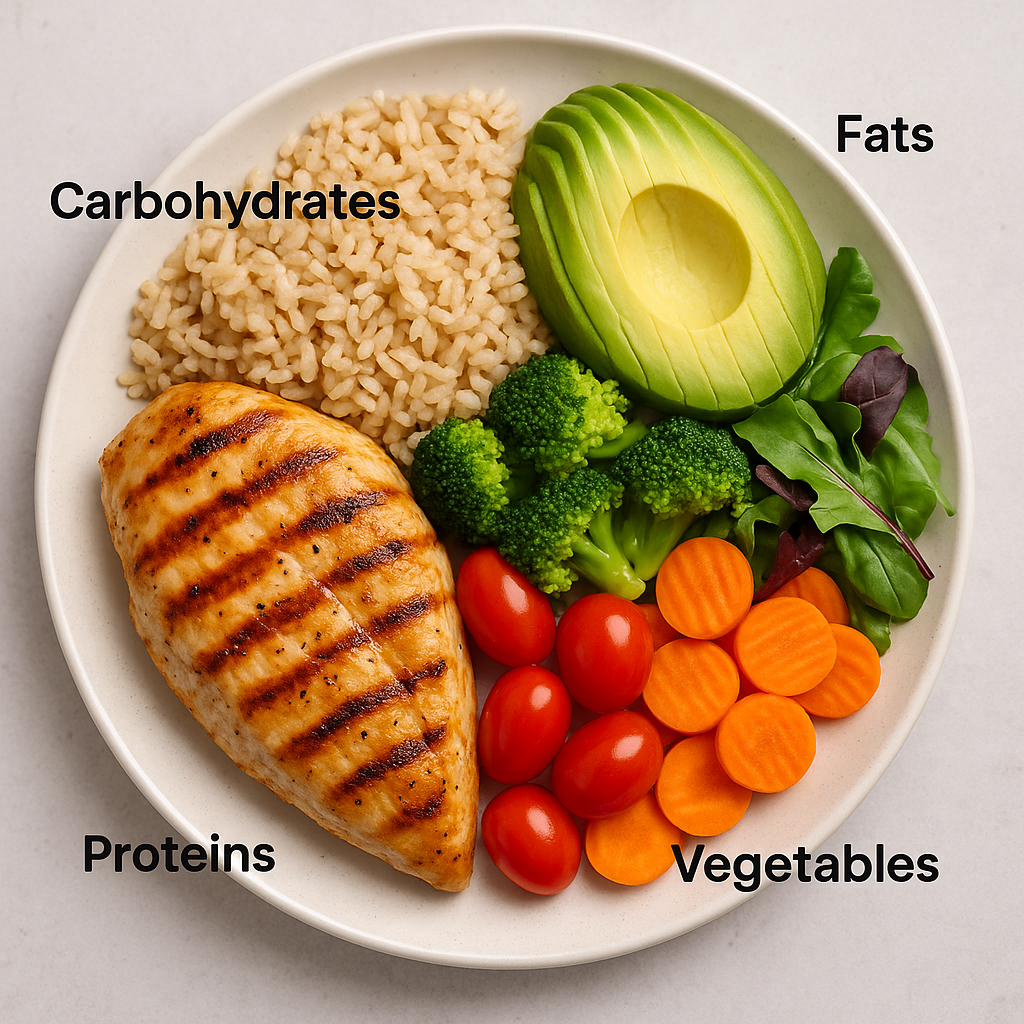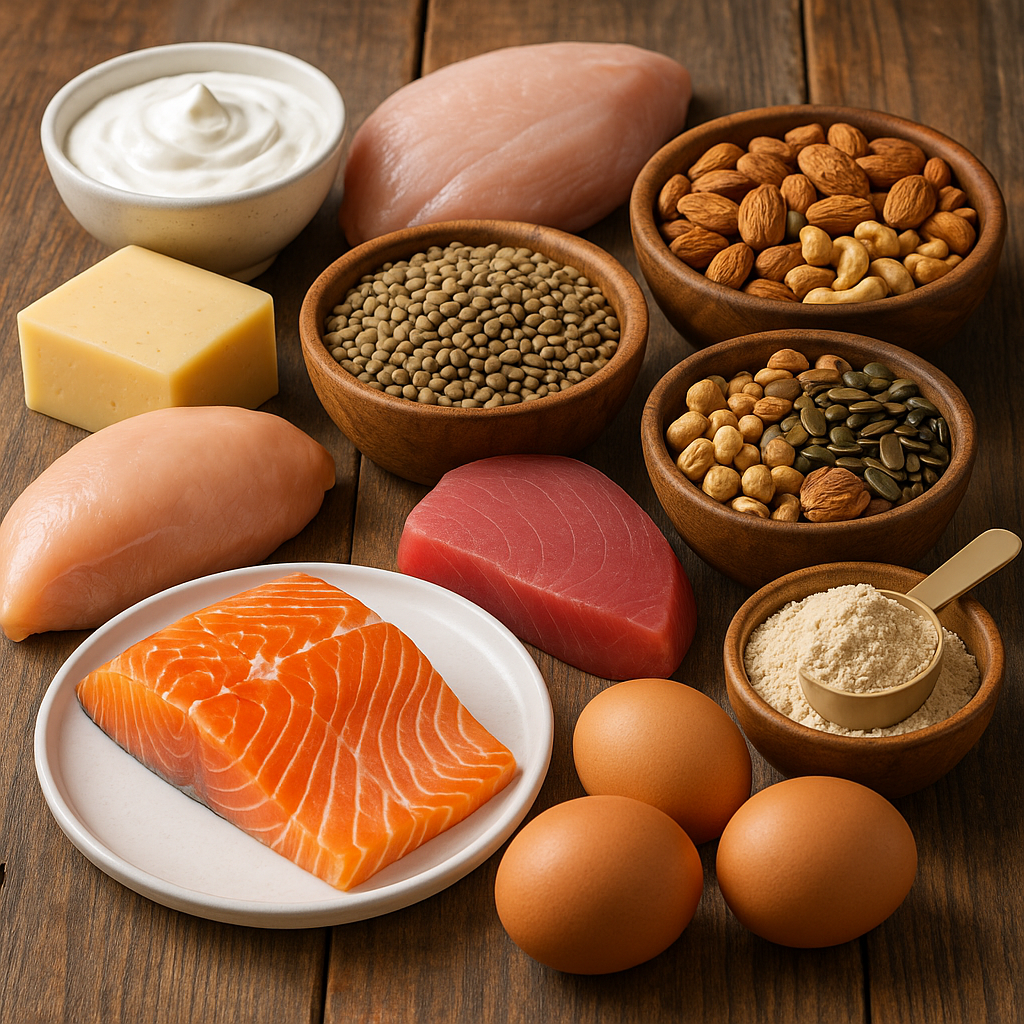Introduction
Understanding macronutrients is the key to unlocking your fitness potential, whether you’re trying to lose weight, build muscle, or improve athletic performance. While exercise gets most of the attention in fitness discussions, nutrition provides the foundation that makes all your hard work possible. Macronutrients – proteins, carbohydrates, and fats – are the three primary nutrients your body needs in large quantities to function optimally and achieve your fitness goals.
Many fitness enthusiasts focus solely on calories, but the source of those calories matters tremendously. A 2,000-calorie diet consisting primarily of processed foods will produce vastly different results than 2,000 calories from nutrient-dense whole foods properly balanced across all macronutrients. This comprehensive guide will teach you how to optimize your macronutrient intake for your specific fitness goals, helping you make informed nutritional decisions that accelerate your progress.
The relationship between macronutrients and fitness success is both complex and fascinating. Each macronutrient serves unique functions in your body, from building and repairing tissues to providing energy for workouts and supporting recovery. By understanding these roles and learning how to manipulate your macronutrient ratios, you can essentially program your body for success, whether that means losing fat, gaining muscle, or improving endurance performance.

Understanding the Three Macronutrients
Proteins are the building blocks of life, composed of amino acids that your body uses to build and repair tissues, produce enzymes and hormones, and support immune function. Unlike carbohydrates and fats, proteins cannot be stored in your body, making consistent daily intake crucial for optimal health and fitness progress. Complete proteins contain all nine essential amino acids your body cannot produce on its own.
High-quality protein sources include lean meats, fish, eggs, dairy products, legumes, and protein supplements. For fitness enthusiasts, protein plays the starring role in muscle protein synthesis – the process by which your body builds new muscle tissue in response to training stimuli. Without adequate protein intake, your workouts may actually break down more muscle than they build, leading to decreased strength and a slower metabolism.
Carbohydrates serve as your body’s preferred energy source, particularly for high-intensity exercise and brain function. Despite their controversial reputation in popular diet culture, carbohydrates are essential for optimal athletic performance and recovery. They’re broken down into glucose, which fuels your muscles during workouts and replenishes glycogen stores afterward.
Complex carbohydrates from sources like oats, brown rice, sweet potatoes, and vegetables provide sustained energy release, while simple carbohydrates from fruits offer quick energy for pre-workout fuel or post-workout recovery. The timing and type of carbohydrates you consume can significantly impact your energy levels, workout performance, and body composition goals.
Fats are essential for hormone production, nutrient absorption, cell membrane structure, and countless other physiological functions. They provide the most concentrated source of energy at 9 calories per gram, making them crucial for endurance activities and overall health. Essential fatty acids must be obtained through diet since your body cannot manufacture them.
Healthy fat sources include avocados, nuts, seeds, olive oil, fatty fish, and coconut oil. Far from being the enemy of weight loss, appropriate fat intake supports satiety, helps regulate appetite hormones, and enables the absorption of fat-soluble vitamins A, D, E, and K. Many people following low-fat diets experience hormonal imbalances and decreased exercise performance due to inadequate fat intake.
Macronutrient Ratios for Different Fitness Goals
Weight Loss Focus: For sustainable fat loss while preserving muscle mass, a moderate protein, moderate carbohydrate, moderate fat approach works best for most people. A typical ratio might be 30% protein, 35% carbohydrates, and 35% fats. This distribution ensures adequate protein for muscle preservation, sufficient carbohydrates for workout performance, and enough fats for hormonal health and satiety.
Higher protein intake during weight loss phases serves multiple purposes: it has the highest thermic effect (burning calories during digestion), promotes satiety to control hunger, and preserves lean muscle mass during caloric restriction. Many successful dieters find that prioritizing protein at each meal naturally leads to appropriate total calorie intake without obsessive tracking.
Muscle Building Focus: Muscle growth requires a caloric surplus combined with progressive resistance training and optimal protein distribution throughout the day. A typical muscle-building macronutrient distribution might be 25% protein, 45% carbohydrates, and 30% fats. The higher carbohydrate intake supports intense training sessions and promotes the anabolic environment necessary for muscle growth.
During muscle-building phases, meal timing becomes more important. Consuming protein every 3-4 hours maintains elevated muscle protein synthesis throughout the day. Pre and post-workout nutrition, particularly combining fast-digesting carbohydrates with high-quality protein, can significantly enhance training adaptations and recovery.
Athletic Performance Focus: Endurance athletes typically require higher carbohydrate intake (50-60% of total calories) to fuel prolonged training sessions and maintain glycogen stores. Strength and power athletes may prefer moderate carbohydrate intake (35-45%) with higher protein (25-30%) to support recovery and lean mass development.
The specific sport, training phase, and individual metabolism all influence optimal macronutrient distribution for athletes. Periodizing nutrition to match training demands – higher carbohydrates during intense training blocks, moderate intake during base building phases – can optimize both performance and body composition.

Calculating Your Personal Macronutrient Needs
Step 1: Determine Total Daily Energy Expenditure (TDEE) by calculating your Basal Metabolic Rate (BMR) and multiplying by your activity factor. Numerous online calculators can provide estimates, but remember these are starting points that require individual adjustment based on results.
Step 2: Set Your Goal-Specific Calorie Target. For weight loss, create a moderate deficit of 300-500 calories below TDEE. For muscle gain, aim for a surplus of 200-400 calories above TDEE. For maintenance, stay within 100 calories of your TDEE.
Step 3: Calculate Protein Needs First. Aim for 0.8-1.2 grams per kilogram of body weight for general health, 1.4-2.0 grams per kilogram for muscle building, and 1.8-2.4 grams per kilogram during weight loss phases. Multiply your protein grams by 4 to get protein calories.
Step 4: Determine Fat Requirements. Never go below 0.5 grams per kilogram of body weight for basic health. Most fitness enthusiasts do well with 0.8-1.2 grams per kilogram. Multiply fat grams by 9 to get fat calories.
Step 5: Allocate Remaining Calories to Carbohydrates. Subtract protein and fat calories from your total calorie target, then divide the remainder by 4 to get carbohydrate grams.
Example Calculation: 70kg individual with 2,000 calorie target for muscle building: Protein: 140g (560 calories), Fat: 78g (700 calories), Carbohydrates: 185g (740 calories). This provides approximately 28% protein, 35% fat, and 37% carbohydrates.
Timing Your Macronutrients for Optimal Results
Pre-Workout Nutrition (1-3 hours before exercise): Focus on easily digestible carbohydrates with moderate protein and minimal fat to avoid digestive issues. Examples include banana with Greek yogurt, oatmeal with berries, or toast with honey. Avoid high-fiber or high-fat foods that might cause gastrointestinal distress during exercise.
Post-Workout Nutrition (within 2 hours after exercise): This window is crucial for initiating muscle protein synthesis and replenishing glycogen stores. Aim for a 3:1 or 4:1 ratio of carbohydrates to protein. Chocolate milk, protein smoothies with fruit, or lean meat with rice are excellent options.
Throughout the Day: Distribute protein intake evenly across meals to maintain elevated muscle protein synthesis. Aim for 20-40 grams of high-quality protein every 3-4 hours. Include healthy fats at most meals for satiety and hormone production, but separate them from immediate pre and post-workout periods for optimal digestion.
Evening Nutrition: Contrary to popular belief, eating carbohydrates in the evening won’t automatically lead to fat gain if you’re within your calorie targets. In fact, evening carbohydrates can improve sleep quality and morning training performance. Focus on slower-digesting proteins like casein or Greek yogurt before bed to support overnight recovery.
Food Sources for Each Macronutrient
High-Quality Protein Sources: Lean meats (chicken breast, turkey, lean beef), fish and seafood, eggs, dairy products (Greek yogurt, cottage cheese), plant-based options (lentils, chickpeas, quinoa), and protein supplements. Aim for variety to ensure complete amino acid profiles and micronutrient diversity.
Optimal Carbohydrate Sources: Whole grains (brown rice, quinoa, oats), starchy vegetables (sweet potatoes, regular potatoes, butternut squash), fruits (berries, bananas, apples), and legumes. Choose minimally processed sources that provide fiber, vitamins, and minerals alongside energy.
Healthy Fat Sources: Avocados, nuts and seeds (almonds, walnuts, chia seeds, flaxseeds), olive oil and other cold-pressed oils, fatty fish (salmon, mackerel, sardines), coconut products, and egg yolks. Focus on sources rich in omega-3 fatty acids and monounsaturated fats.
Common Macronutrient Mistakes to Avoid
Protein Overconsumption: While protein is important, consuming excessive amounts (over 2.5g per kg body weight) doesn’t provide additional benefits and may strain kidneys over time. More isn’t always better, and those extra protein calories could be better allocated to carbohydrates or fats.
Carbohydrate Phobia: Many fitness enthusiasts unnecessarily restrict carbohydrates, leading to decreased workout performance, poor recovery, and potential hormonal issues. Carbohydrates are not the enemy – timing and source matter more than strict avoidance.
Fat Elimination: Very low-fat diets can disrupt hormone production, reduce nutrient absorption, and decrease exercise performance. Aim for at least 20-25% of calories from healthy fats for optimal health and performance.
Ignoring Individual Responses: Optimal macronutrient ratios vary significantly between individuals based on genetics, training style, goals, and personal preferences. Use general guidelines as starting points, then adjust based on your body’s responses and performance.
Frequently Asked Questions
Do I need to track macronutrients obsessively? While precise tracking can be helpful initially to understand portions and ratios, long-term success comes from developing intuitive eating skills based on hunger, satiety, and performance cues.
Can I build muscle while losing fat? Yes, especially for beginners or those returning to training. This “body recomposition” requires adequate protein intake, progressive resistance training, and patient consistency.
Are supplements necessary to meet macronutrient goals? Whole foods should form the foundation of your nutrition plan, but protein powder can be a convenient tool for meeting protein targets, especially for busy individuals or those with high requirements.
How do I adjust macronutrients if I’m not seeing results? Give any changes 2-4 weeks to show effects. If weight loss stalls, slightly reduce calories (primarily from carbohydrates or fats). If muscle gain is slow, increase calories modestly while maintaining protein intake.
Should macronutrient ratios change on rest days versus training days? Some people benefit from slightly lower carbohydrates on rest days, but this isn’t necessary for everyone. Consistency often produces better results than complex cycling protocols.
Conclusion
Mastering macronutrients transforms nutrition from guesswork into a precision tool for achieving your fitness goals. By understanding how proteins build and repair tissues, carbohydrates fuel performance, and fats support crucial physiological functions, you can make informed decisions that accelerate your progress. Remember that optimal ratios vary between individuals and goals – use these guidelines as starting points for your own experimentation and refinement. Combine this nutritional foundation with consistent training and adequate recovery, and you’ll have all the tools necessary for remarkable fitness transformations.
Contact: BSUN Ventures
Website: www.bsunventures.com
Email: Contactbsun@yahoo.com
Address: 148, Netaji Subhash Market, Karol Bagh New Delhi-05
Remember: Always consult with a healthcare professional before starting any new exercise program.
